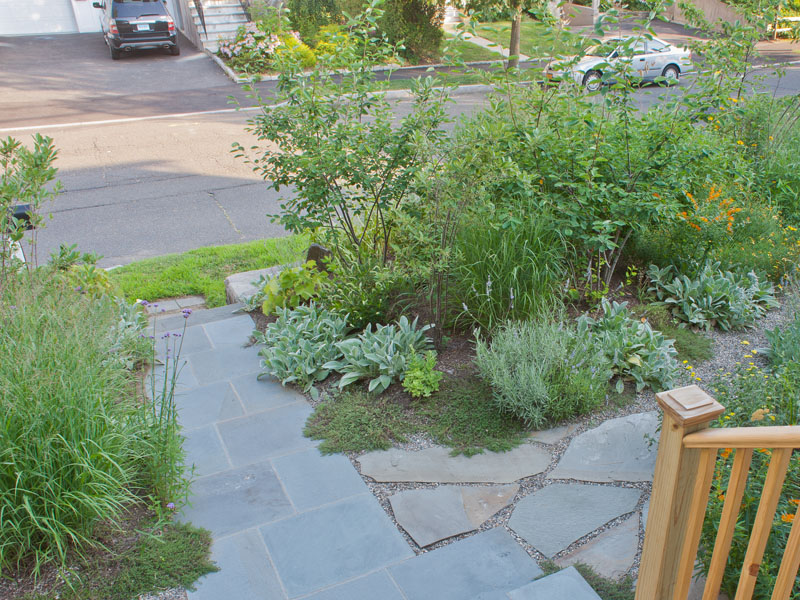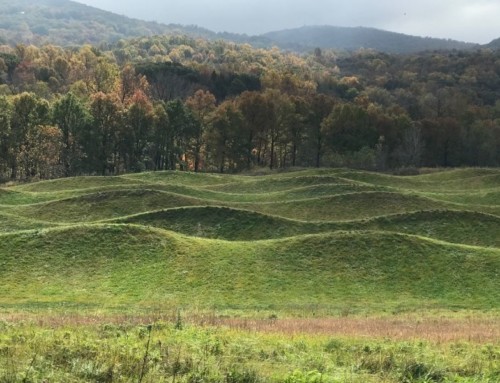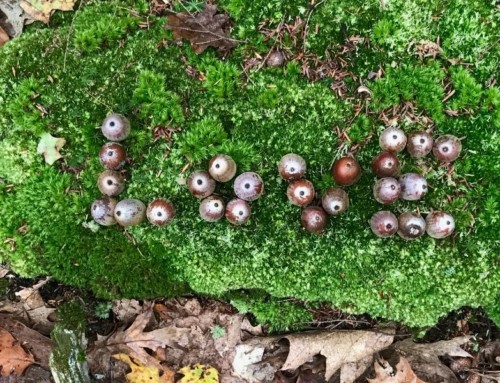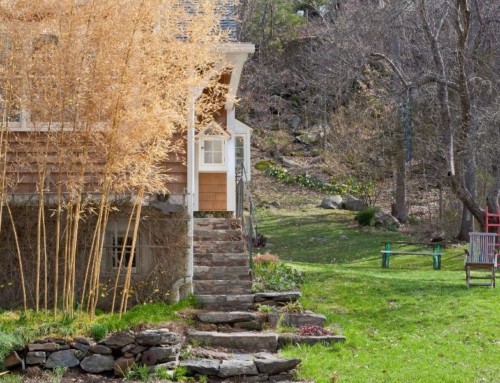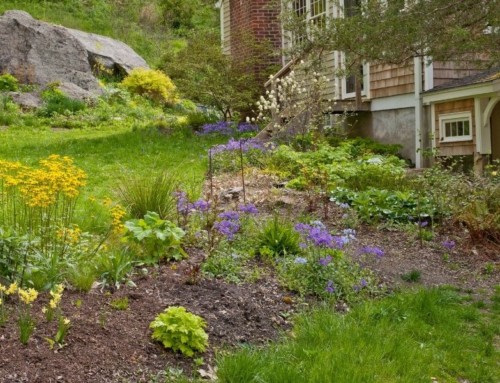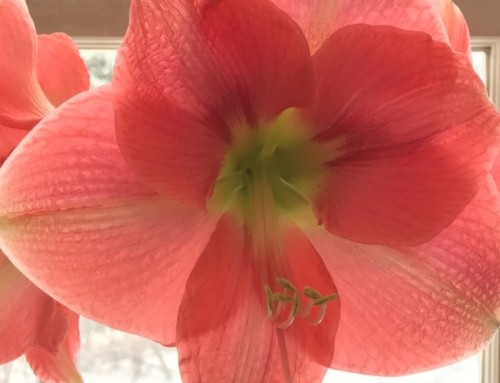I’ve always had a visceral dislike of the term “curb appeal.”
It’s all about marketing real estate and products – and I don’t buy it.
I do want my home to appear attractive and welcoming to visitors. But who is all this curb appeal for?
Strangers driving by? Neighbors across the street?
Or you who live there? Really, do you ever walk out to the curb to admire your foundation plantings?
What about birds and butterflies and other living creatures?
I’m lucky – There are no curbs where I live, and houses are set back from the road. My neighbors and I share the luxury of invisibility and garden to please ourselves.
Resale value is not a big priority because I’m not moving. Wildlife value, resilience and my own particular sense of beauty are a whole lot more important.
Cars, Curbs and The Expectations of Others
Some of my garden coaching clients live in neighborhoods where uninhabited cookie-cutter landscapes, designed to be seen from the street, are the default look. Together we’re un-doing mind-numbing suburban sameness.
We’re creating landscapes that appeal to the people who live there, and to wildlife.
I often work with older homeowners who are thinking about selling their large properties and downsizing. They need a new perspective, easier maintenance and a problem-solving plan of action that doesn’t cost a fortune.
Often, the house is at the end of a long driveway and the first thing you encounter is a gaping, perpetually open double-wide garage door. Not much appeal there. It’s an unfortunately common homebuilding trend bending to the tyranny of the automobile.
Nobody ever uses the front door. Yet heavily mulched beds with the same mass-produced “curb appeal” blobs, spires and occasional random weepers you see everywhere flank the front door.
If nobody’s looking, using or enjoying your garden, why go to all that expense and effort?
Skeptical About Being Sold
I did a couple internet searches to suss out where my growing curb appeal aversion came from.
“Where did the term curb appeal come from?” Real estate. It started as a pre-internet catch phrase for the first impression from the street – and became a marketing juggernaut.
Enter “landscaping for curb appeal” and you’ll see what I mean by juggernaut – “a literal or metaphorical force regarded as mercilessly destructive and unstoppable,” as per Wikipedia.
Hold on to your skepticism and credit cards.
True, there’s a welcome trend away from big lawns and mingy foundation plantings. But much of what comes online is trite, cluttered, unsustainable guilt-tripping product pushing and “pest free” plants that don’t feed birds, insects or our souls.
Hyperbole, who, me?
One company’s pitch, “If you don’t already have one, a well-designed paver walkway and an inviting entryway with LED lights and proper landscaping can really make a big difference in curb appeal.”
Secure footing and LED lighting are very good ideas.
Results for “pollution in concrete manufacturing” only bolstered my lack of enthusiasm for industrial-looking concrete pavers. Bloomberg’s Cement Produces More Pollution Than All the Trucks in the World considers environmental costs and new “green” alternatives.
Reading on, the company’s “proper landscaping” is a pitch for artificial turf. “Turf is green all year long, which will leave a lasting impression on your neighbors or a great first impression for prospective buyers. The best part is it’s virtually maintenance free.”
This certainly made a lasting impression on me. I didn’t realize what I was up against. Have we really come to this???
Instead of focusing on what people see looking at the house, how about focusing on what you see from the house?
Suburban Front Yard Transformation
The small front yard garden in the photo featured at the top of this post started out looking like this.
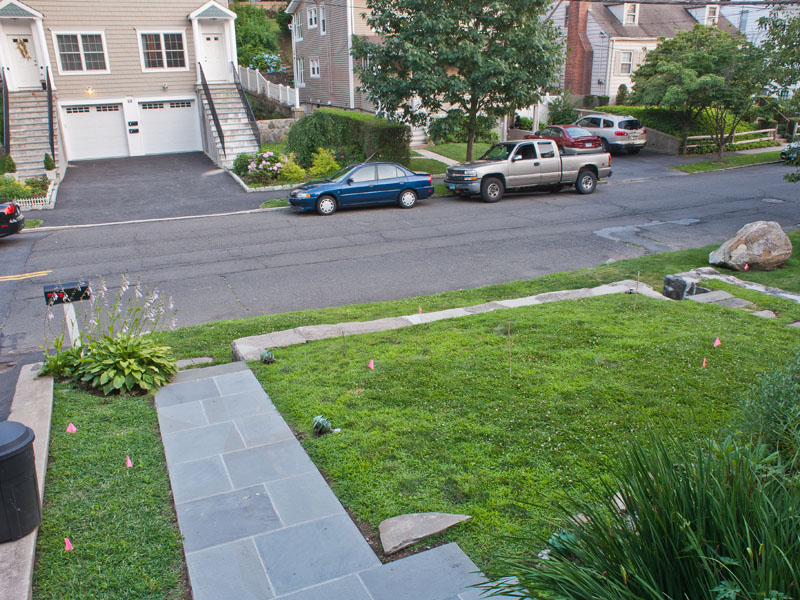
It had a crabgrass and clover lawn, hostas in full baking sun and an unobstructed view of – and from – a whole lot of neighbors.
The only people in sight were high-decibel, high-maintenance mow-blow-go-know-nothing landscape crews. The only wildlife I saw – a dead rat in the driveway and seagulls flying overhead.
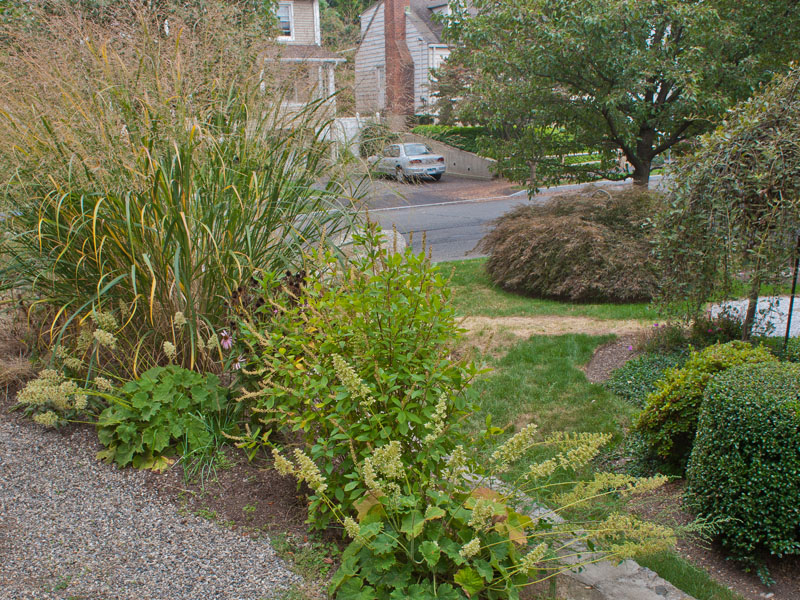
Graceful switchgrass (Panicum virgatum ‘Northwind’), Heuchera villosa ‘Autumn Bride’ and Clethera alnifolia – delightfully different from surrounding yards.
The owner didn’t know what she wanted, but she knew she didn’t want the kind of yard she could see next door and across the street.
I dug out the lawn, added a soil berm to capture runoff and planted it with layers of small-scale native trees and shrubs for privacy from the street – and beauty from the house year-round.
This created an intimate garden space, where the owner could look into a tapestry of self-reliant, mostly native flowers and grasses, or stroll along a gravel path.
As soon as I laid out plants, before they even went into the ground, birds appeared, and butterflies, and the little girl next door, who made it her special place.
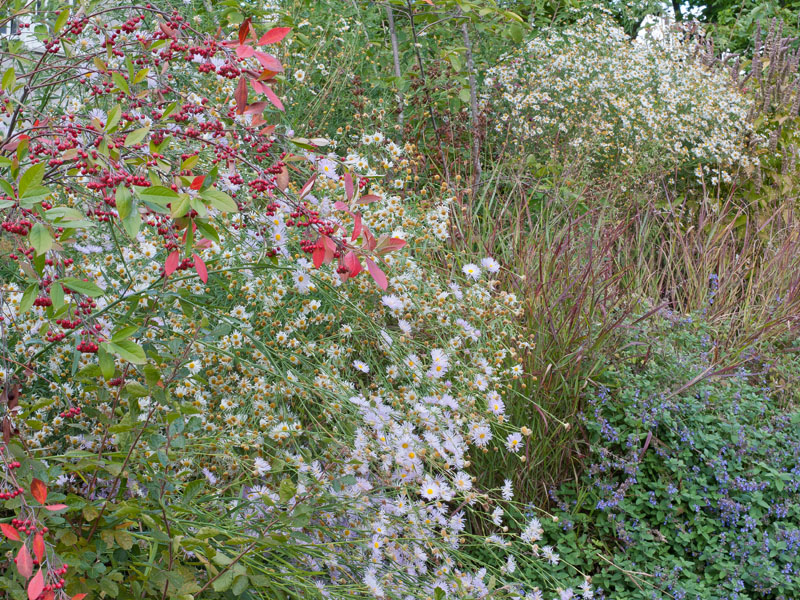
And here’s the view from the street. That’s my idea of curb appeal!
